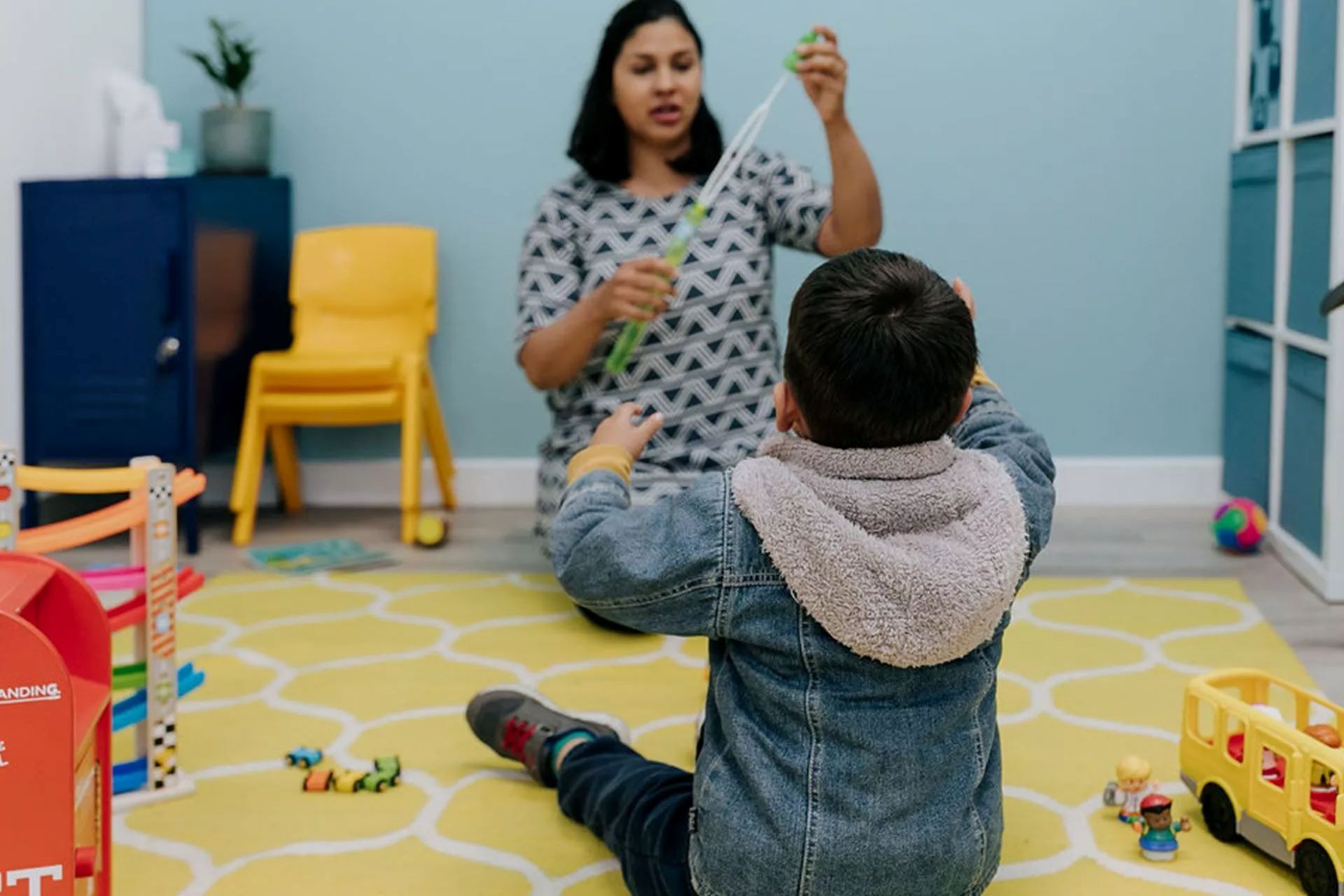Home>Education>Dealing With Challenging Students: Best Ways To Handle Classroom Management Difficulties


Education
Dealing With Challenging Students: Best Ways To Handle Classroom Management Difficulties
Published: February 21, 2024
Learn effective strategies for managing challenging students in the classroom. Discover the best ways to handle classroom management difficulties in the field of education.
(Many of the links in this article redirect to a specific reviewed product. Your purchase of these products through affiliate links helps to generate commission for Regretless.com, at no extra cost. Learn more)
Table of Contents
- Understanding Challenging Behavior in Students
- Establishing Clear Expectations and Consequences
- Building Positive Relationships with Students
- Utilizing Proactive Classroom Management Strategies
- Implementing Individualized Behavior Plans
- Seeking Support from School Resources and Administration
- Self-Care for Teachers Dealing with Challenging Students
Understanding Challenging Behavior in Students
Understanding the underlying reasons for challenging behavior in students is crucial for effective classroom management. Challenging behavior can manifest in various forms, such as defiance, aggression, or inattentiveness, and it often stems from a range of factors. These may include emotional struggles, learning disabilities, attention deficits, or environmental stressors. By delving into the root causes of such behavior, educators can tailor their approach to address the specific needs of each student.
It's essential to recognize that challenging behavior is often a form of communication. Students may act out due to frustration, a lack of understanding, or an inability to express their emotions effectively. By acknowledging this, educators can approach challenging behavior with empathy and a willingness to understand the student's perspective.
Moreover, the impact of external factors on students' behavior cannot be overlooked. Home environment, family dynamics, and societal influences can significantly contribute to a student's conduct in the classroom. By gaining insight into these external influences, educators can better comprehend the triggers for challenging behavior and develop strategies to support the student effectively.
In addition, it's important to consider the developmental stage of the students. Children and adolescents undergo significant physical, emotional, and cognitive changes, which can influence their behavior. Understanding the typical behaviors associated with different developmental stages can provide valuable context for interpreting and addressing challenging behavior in students.
By comprehensively understanding the multifaceted nature of challenging behavior in students, educators can approach classroom management with a holistic and empathetic mindset. This understanding forms the foundation for implementing tailored strategies that address the unique needs of each student, fostering a supportive and inclusive learning environment.
Establishing Clear Expectations and Consequences
Establishing clear expectations and consequences is fundamental to maintaining a structured and harmonious learning environment. When students understand what is expected of them, as well as the potential outcomes of their actions, they are more likely to exhibit positive behavior and actively engage in the learning process.
To begin with, educators should communicate their expectations effectively, outlining the standards of behavior, academic performance, and participation that are required in the classroom. This can be achieved through verbal communication, visual aids, or written guidelines, ensuring that students have a clear understanding of the behavioral and academic standards that are expected of them. By setting clear expectations, educators provide students with a framework for their conduct, fostering a sense of accountability and responsibility.
Equally important is the establishment of consequences for both positive and negative behavior. When students meet or exceed the expectations set by the educator, acknowledging and rewarding their positive behavior reinforces a culture of achievement and encourages continued adherence to the established standards. Conversely, when students fail to meet the expectations, it is essential to implement fair and consistent consequences. These consequences should be communicated in advance, allowing students to understand the potential outcomes of their actions and make informed choices regarding their behavior.
Consistency is key when implementing expectations and consequences. By consistently enforcing the established standards and consequences, educators demonstrate that they are committed to upholding a fair and structured learning environment. This consistency helps students internalize the expectations and understand the direct correlation between their behavior and the resulting consequences.
Moreover, involving students in the process of establishing expectations and consequences can foster a sense of ownership and accountability. When students have a voice in shaping the classroom standards and consequences, they are more likely to perceive them as fair and reasonable, leading to increased compliance and a more positive classroom dynamic.
In summary, by clearly communicating expectations, establishing consistent consequences, and involving students in the process, educators can create a supportive and structured learning environment. This approach empowers students to take ownership of their behavior and academic performance, ultimately contributing to a positive and conducive classroom atmosphere.
Building Positive Relationships with Students
Building positive relationships with students is a cornerstone of effective classroom management. When educators establish strong connections with their students, it fosters a sense of trust, respect, and mutual understanding, laying the groundwork for a supportive and inclusive learning environment.
To begin, genuine and empathetic communication forms the bedrock of positive relationships. Educators should strive to actively listen to their students, demonstrating a genuine interest in their thoughts, feelings, and experiences. By creating an open and non-judgmental space for communication, educators can gain valuable insights into their students' perspectives, allowing for more personalized support and guidance.
Furthermore, demonstrating empathy and understanding towards students' challenges and triumphs is essential for building rapport. Acknowledging and validating students' emotions and experiences cultivates a sense of belonging and acceptance within the classroom, fostering a positive and nurturing atmosphere.
Moreover, educators can leverage positive reinforcement to strengthen their relationships with students. Recognizing and celebrating students' achievements, both academic and behavioral, reinforces a culture of positivity and encouragement. By highlighting students' strengths and efforts, educators can instill a sense of confidence and motivation, strengthening the teacher-student bond.
Additionally, creating opportunities for individualized interactions can significantly contribute to building positive relationships. Taking the time to engage in one-on-one conversations, offering personalized support, and showing a genuine interest in each student's well-being demonstrates a commitment to their success and overall development.
Furthermore, incorporating student interests and perspectives into the learning process can enhance the teacher-student relationship. By integrating students' interests and cultural backgrounds into classroom activities and discussions, educators convey a message of inclusivity and respect, strengthening the connection with their students.
In summary, building positive relationships with students is a multifaceted endeavor that requires genuine communication, empathy, positive reinforcement, individualized interactions, and inclusivity. When educators prioritize the establishment of strong and positive relationships, they create a conducive and supportive learning environment where students feel valued, understood, and motivated to excel.
Utilizing Proactive Classroom Management Strategies
Utilizing proactive classroom management strategies is essential for creating an environment that fosters positive behavior and maximizes learning opportunities. Proactive strategies focus on preventing challenging behavior before it occurs, thereby promoting a conducive and harmonious classroom atmosphere. By implementing proactive measures, educators can effectively address potential triggers for disruptive behavior and create a supportive learning environment for all students.
One key proactive strategy is the establishment of clear routines and procedures. Consistent and well-defined routines provide students with a sense of structure and predictability, reducing anxiety and uncertainty. By clearly outlining the steps for various classroom activities, transitions, and academic tasks, educators empower students to navigate the learning environment with confidence and focus on their academic pursuits.
Moreover, incorporating engaging and interactive instructional methods can proactively mitigate potential behavior challenges. Utilizing varied teaching techniques, such as hands-on activities, group discussions, and multimedia resources, captures students' interest and maintains their active participation. When students are actively engaged in the learning process, they are less likely to exhibit disruptive behavior, as they are invested in the educational experience.
Additionally, promoting a positive and inclusive classroom culture is a proactive approach to classroom management. Encouraging collaboration, respect for diverse perspectives, and a sense of community fosters a supportive environment where students feel valued and respected. By celebrating diversity and promoting inclusivity, educators create a space where all students feel a sense of belonging, reducing the likelihood of exclusionary behavior.
Furthermore, implementing differentiated instruction tailored to students' individual learning needs is a proactive strategy that supports positive behavior. Recognizing and accommodating diverse learning styles, strengths, and challenges ensures that all students have equitable access to educational opportunities. By addressing students' unique learning requirements, educators can minimize frustration and disengagement, thereby reducing the occurrence of disruptive behavior.
Incorporating positive behavior reinforcement systems, such as praise, rewards, and recognition, is another proactive strategy that promotes a conducive classroom environment. By acknowledging and celebrating students' positive behavior and academic achievements, educators reinforce a culture of respect, responsibility, and motivation, contributing to a harmonious and supportive classroom dynamic.
In essence, proactive classroom management strategies encompass a range of approaches aimed at preventing challenging behavior and creating an environment conducive to learning and positive social interactions. By implementing these proactive measures, educators can establish a supportive and inclusive classroom environment where students feel empowered to thrive academically and behaviorally.
Implementing Individualized Behavior Plans
Implementing individualized behavior plans is a pivotal aspect of effective classroom management, particularly when addressing the unique needs of students with challenging behavior. These tailored plans are designed to provide personalized support and interventions that align with the specific behavioral challenges and strengths of each student. By customizing behavior plans, educators can create targeted strategies that address the root causes of challenging behavior and promote positive alternatives.
The process of implementing individualized behavior plans begins with a comprehensive assessment of the student's behavior, considering the factors that contribute to their challenges. This assessment may involve gathering input from parents, conducting behavioral observations, and collaborating with support staff to gain a holistic understanding of the student's behavioral patterns and triggers. By delving into the underlying causes of the behavior, educators can develop informed and targeted interventions.
Once the assessment phase is complete, educators can collaborate with relevant stakeholders, including parents, counselors, and special education professionals, to devise a behavior plan tailored to the student's unique needs. This collaborative approach ensures that the behavior plan incorporates diverse perspectives and expertise, leading to a comprehensive and effective support strategy.
Individualized behavior plans typically encompass clear and measurable goals that outline the desired behavioral outcomes for the student. These goals are specific to the student's challenges and strengths, providing a roadmap for progress and improvement. Additionally, the behavior plan includes detailed strategies and interventions that are tailored to address the student's specific triggers and behavioral patterns. These strategies may encompass proactive measures, such as environmental modifications, personalized reinforcement systems, and targeted skill-building activities.
Consistent monitoring and data collection are integral components of individualized behavior plans. Educators track the student's progress, collect behavioral data, and adjust interventions based on the ongoing assessment of the student's response to the behavior plan. This iterative process allows educators to refine and adapt the strategies to best support the student's behavioral growth and development.
Moreover, effective communication and collaboration with the student and their support network are essential for the successful implementation of individualized behavior plans. Educators should involve the student in the goal-setting process, fostering a sense of ownership and accountability. Additionally, maintaining open communication with parents and support professionals ensures a cohesive and coordinated approach to supporting the student's behavioral needs.
In summary, implementing individualized behavior plans involves a comprehensive assessment, collaborative planning, goal setting, tailored interventions, consistent monitoring, and effective communication. By customizing behavior plans to address the specific needs of students with challenging behavior, educators can create a supportive and inclusive learning environment where all students have the opportunity to thrive behaviorally and academically.
Seeking Support from School Resources and Administration
Seeking support from school resources and administration is a crucial step in effectively managing challenging behavior in the classroom. Collaboration with various school resources and administrative personnel can provide educators with valuable insights, specialized expertise, and additional support systems to address the diverse needs of students exhibiting challenging behavior.
One of the primary avenues for seeking support is through the school's counseling and mental health services. School counselors and mental health professionals possess expertise in understanding and addressing the social, emotional, and behavioral challenges that students may encounter. By collaborating with these professionals, educators can gain valuable insights into the underlying factors contributing to challenging behavior, as well as access resources for individual or group counseling, behavioral interventions, and social-emotional skill development. Additionally, school counselors can provide guidance on creating a supportive and inclusive classroom environment that fosters positive behavior and emotional well-being.
Furthermore, engaging with special education professionals and support staff can offer tailored strategies for students with diverse learning needs and behavioral challenges. Special education teachers, behavior specialists, and support personnel can collaborate with educators to develop individualized behavior plans, implement targeted interventions, and provide accommodations that support the academic and behavioral success of students with challenging behavior. This collaborative approach ensures that students receive comprehensive support that addresses their unique learning and behavioral requirements.
Administrative support is also instrumental in creating a cohesive and effective approach to managing challenging behavior. Principals, vice-principals, and other administrative leaders play a pivotal role in establishing a school-wide culture that prioritizes positive behavior support and inclusive practices. By engaging with school administrators, educators can advocate for resources, professional development opportunities, and policy initiatives that promote a supportive and inclusive school environment. Additionally, administrators can provide guidance on navigating challenging situations, implementing school-wide behavior management strategies, and fostering a collaborative approach to student support.
Moreover, seeking support from school resources and administration involves leveraging community partnerships and external resources. Collaborating with community organizations, mental health agencies, and youth support services can expand the support network available to students and families. By establishing partnerships with external resources, educators can access additional support services, referrals, and community-based programs that complement the school's efforts in addressing challenging behavior and promoting student well-being.
In essence, seeking support from school resources and administration involves a collaborative and multi-faceted approach to addressing challenging behavior in the classroom. By leveraging the expertise, resources, and guidance available within the school and broader community, educators can create a comprehensive support system that fosters positive behavior, academic success, and overall well-being for all students.
Self-Care for Teachers Dealing with Challenging Students
Self-care is paramount for teachers who are tasked with managing challenging students and navigating complex classroom dynamics. The demanding nature of addressing challenging behavior, supporting diverse learning needs, and maintaining a positive learning environment can take a toll on educators' well-being. Implementing self-care strategies is essential to ensure that teachers can effectively support their students while prioritizing their own mental, emotional, and physical health.
One fundamental aspect of self-care for teachers is establishing boundaries. Setting clear boundaries between professional responsibilities and personal well-being is crucial for preventing burnout and maintaining a healthy work-life balance. Educators should allocate time for relaxation, hobbies, and personal pursuits outside of their professional roles, allowing for rejuvenation and stress relief.
Additionally, practicing mindfulness and stress-reduction techniques can significantly benefit teachers dealing with challenging students. Engaging in mindfulness meditation, deep breathing exercises, or yoga can help alleviate stress, promote mental clarity, and enhance emotional resilience. These practices enable educators to manage the pressures of their roles more effectively while fostering a positive mindset.
Seeking support from colleagues and professional networks is another vital component of self-care. Establishing a support system within the school community or through professional organizations provides teachers with opportunities to share experiences, seek advice, and receive emotional support. Collaborative discussions and peer support can alleviate feelings of isolation and offer valuable insights into managing challenging classroom situations.
Furthermore, engaging in self-care activities outside of the school environment is essential for teachers' well-being. Engaging in regular physical exercise, spending time in nature, pursuing creative hobbies, or simply taking time for relaxation can rejuvenate educators and mitigate the impact of stress associated with managing challenging students.
Moreover, prioritizing self-care also involves recognizing when to seek professional support. Teachers should not hesitate to access counseling services, therapy, or mental health resources when needed. Addressing their own emotional and mental well-being equips educators with the resilience and capacity to effectively support their students.
In summary, self-care for teachers dealing with challenging students is a multifaceted approach that encompasses setting boundaries, practicing mindfulness, seeking support, engaging in personal activities, and accessing professional resources. By prioritizing their own well-being, educators can sustain their capacity to effectively manage challenging classroom dynamics while fostering a positive and supportive learning environment for all students.














